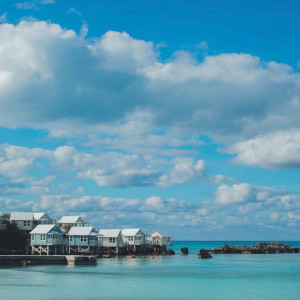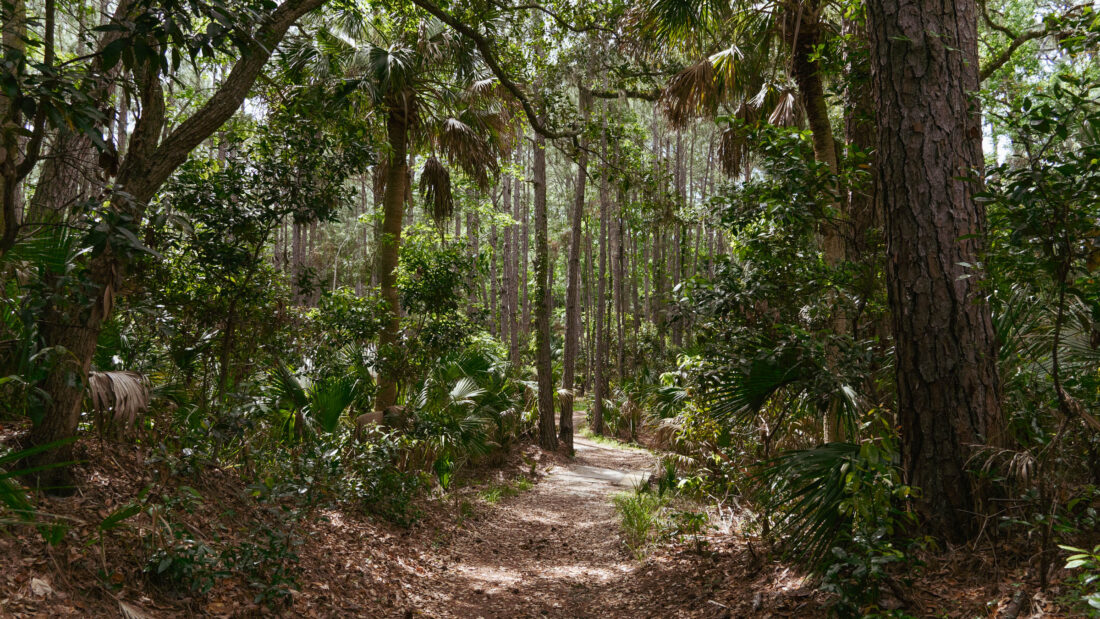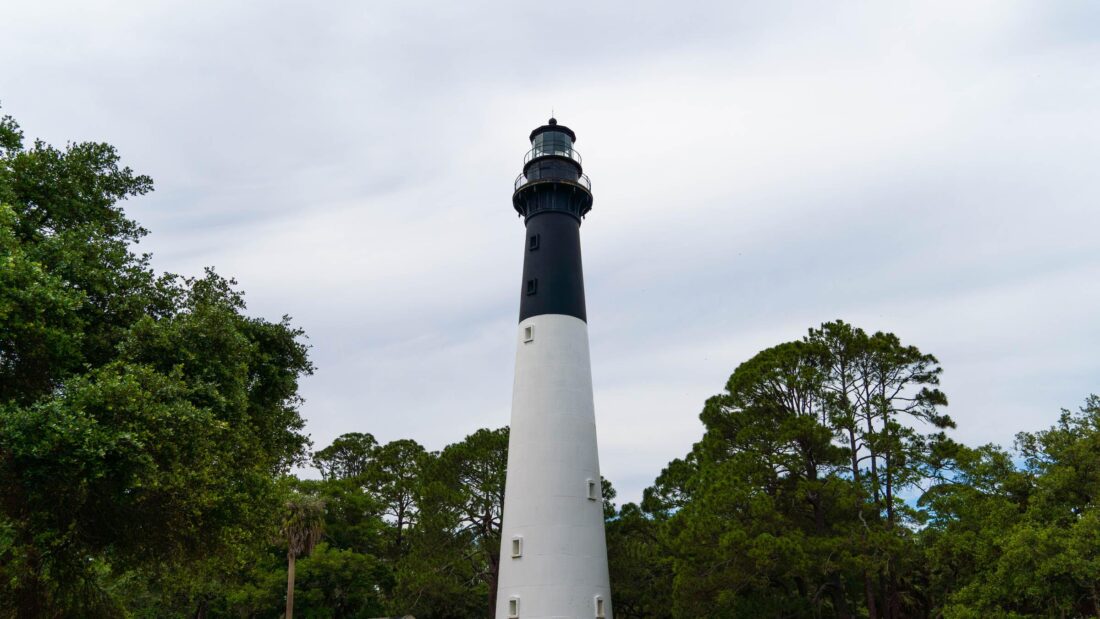Know the scene in Forrest Gump where Tom Hanks dashes through a dense Vietnamese jungle? Well, that’s actually a homegrown American ecosystem, and a drive down Highway 21 through historic Beaufort, South Carolina, past produce stands and country markets and over the Harbor River, will get you there.

Hunting Island State Park’s subtropical maritime forest is a tapestry of saw palmetto, slash pine, live oak, cabbage palmetto, magnolia, wax myrtle, and red bay. One of six barrier islands in Beaufort County, Hunting Island’s 5,000-acre spread of forest, marsh, and beach was only accessible by boat until the Civilian Conservation Corps built a bridge to it in the early 1930s. (You can still see the island today by boat, via a Coastal Expeditions dolphin tour departing from Saint Helena Island.) In 1935, the land was designated a state park, complete with a towering black and white lighthouse.
Today, the island is South Carolina’s most visited state park, drawing a million visitors a year. Some come for the Forrest Gump lore—filming took place here in the fall of 1993–while others seek out the miles of beaches, kayaking opportunities, or stunning sunsets.
On a recent visit, I admired the visitor center’s resident alligator, sat on the edge of the saltwater lagoon, walked the forested trails, and watched egrets swoop over a salt marsh. It all felt like a mirror back in time to what the coast of South Carolina and Georgia once looked like—untamed, almost otherworldly ecosystems teeming with life, built on shifting sands and by nature transitory.
In that sense, Hunting Island’s future is uncertain. Erosion is steadily chipping away at the south end and has been for decades, despite repeated efforts to augment sand and stem the loss. At Boneyard Beach, the battle for the island comes into sharp focus. Here, the ocean has reclaimed land that once supported trees. Their bleached, water-smoothed branches and roots protrude from the sand in a sight that’s a stark, if beautiful, reminder that barrier islands are a fleeting gift to treasure while we can.
A Day at Hunting Island
Hike breakdown: On a recent visit, I didn’t see another soul on most of the winding trails that weave into the forest. The two-mile Diamondback Rattlesnake Trail was my favorite; even though I didn’t spot its namesake species, a pileated woodpecker and a garter snake made appearances. The most popular spot for photo ops—and sunsets—is the short Marsh Boardwalk Trail that slices through a salt marsh. Gump fans will enjoy the Lagoon Trail—it winds along the body of water where Forrest drops off his wounded comrades in the Vietnam scenes. For the full park experience, take the eight-mile Hunting Island Loop.

Species to spot: Hunting Island is birder’s paradise. Look out for painted buntings, tanagers, orioles, pelicans, oystercatchers, skimmers, terns, herons, egrets, and wood storks. Alligators and horseshoe crabs are the most prehistoric of the park’s residents, and there are two elusive venomous snakes to be aware of: the coral snake and the eastern diamondback rattlesnake. If you are lucky enough to catch a glimpse of either, admire them from afar.
Best view: The 167 steps to the top of the lighthouse afford a panoramic view of the island, but since that structure is currently closed for renovations, the most interesting scenery lies among the driftwood and twisted trees of Boneyard Beach.

Where to stay: If you want to wake up on the beach, Hunting Island has some secluded, tree-shaded, sandy campsites, but book well in advance. There’s also a single cabin (erosion and hurricanes took down the others). But for a step up in luxury, downtown Beaufort offers several historic boutique options, including the 1820-built Rhett House Inn—Tom Hanks stayed there while filming Gump.
Get involved: Just last September, the park’s Nature Center reopened after renovations. It now houses local Gullah artwork and displays of native species like diamondback terrapins, and offers presentations and guided nature walks. Plus, the nonprofit organization Friends of Hunting Island—which spearheaded the Nature Center effort—offers volunteer opportunities, including walking the beach in the early mornings from May to October to support their sea turtle conservation program. (From afar, you can adopt a sea turtle nest.)








